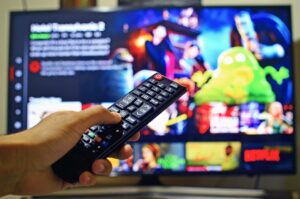 TV viewing has undergone a revolution with the explosion of on-demand, streaming platforms offering a plethora of choice for viewers.
TV viewing has undergone a revolution with the explosion of on-demand, streaming platforms offering a plethora of choice for viewers.
The “attention economy” is building momentum as marketers look for more effective ways to engage audiences in this new world. It’s an exciting time, with new technologies and multi-channel platforms offering many more options for brands to trial innovative approaches to campaigns.
Attention is crucial. If we think about what attention is, it’s about the act of directing the mind to listen, to see or understand. And ultimately marketers want consumers to understand the message that’s being delivered to them and be engaged. There are numerous studies that show engagement drives attention. And ultimately, attention is becoming an ever-scarcer commodity with consumers.
If we divvy up content into four quadrants – news, lifestyle, drama, and sport – we see that different moments reflect different needs. Whether that’s people leaning into news or information on finance or supporting the team that they’re passionate about when it comes to rugby league. There are different ways that people engage with that content and how receptive they are to the advertising environments they’re leaning into.
The industry has done a lot of work to understand what message will best resonate in a news environment compared to a more emotive drama environment. As a result, we can have really interesting conversations with brands and work with them to smartly place ads. When we overlay different formats, such as on demand versus linear, it becomes an even richer experience. One spot doesn’t fit all. Not all screens are created equal.
Hitting the sweet spot
From a network point of view, the sweet spot is when your ad makes sense contextually and enhances the viewer’s experience. Everything comes together perfectly. For example, advertising for food or snacks can be anchored time spots where consideration for food delivery or snacking is considerably high, such as on a Friday or Saturday night.
The food category could also be tried to specific correlated programming, with branded content placed around curated blocks of episodes. This creates a connection between the product being advertised and an aspect of the content itself for a seamless blend.
We often talk about consumers becoming more cynical, how they can spot bad advertising or poor placement from a mile away. The flip side is that they also recognise and appreciate when it’s done well. It might not be that they’re going to tell their friends or make a post, but maybe it’s just a gentle nod on the couch as they see it. It creates positive sentiment towards the brand.
Focusing on channels and context
Marketers need to be increasingly aware of the channel and content when thinking about their creative campaigns. It is our responsibility as networks to have conversations with brands even before the drawing board stage. Viewers should always be front of mind and we need to make sure that we deliver the premium viewing experience they expect. A key part of that is making sure that the advertising is relevant and well executed.
Media environment and context can also help hone the creative output for campaigns, with interactivity an increasingly attractive option. Advertising anchored in competitions during sports programming is particularly successful as viewers are already tapped in and passionate about winning.
Giving viewers an additional avenue of interaction during an NRL or AFL match in the form of a competition or smartphone game allows brands to move beyond advertising and into a value-added experience.
Closing the network-agencies gap
Engagement between media networks and creative agencies has traditionally been quite separate and removed. But the gap is closing as time moves on, especially in light of the pandemic where cooperation was a necessity. However, there’s room for improvement here and for each entity to start bringing each other into conversations earlier on.
Brands really want to see conversion. They want to know that when someone watches something it ultimately leads to a sale. We need to be able to give clients that first step, to be able to do something, test it and prove it. Great strides are being made in this respect and it is sure to be a major point of focus for networks in 2022.
Ultimately, integration and brand funded content have fantastic appeal in the creation of a halo effect. To us, that’s invaluable. Positive association is what a brand strives for and it has long-lasting effects beyond just top-of-mind recall.
By Toby Dewar is the director of customer engagement for Foxtel Media
This article was first published by Mumbrella
